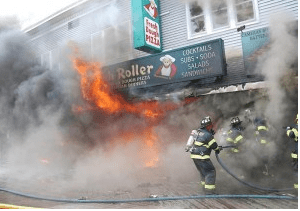 During my fireground situational awareness classes we talk about the process for making high-stress, high consequence decisions. The first step in this process is performing a rapid size up. When I ask participants how long they take to size up a single-family residential dwelling fire with no exposures, the answer I get ranges from 10 to 30 seconds. Then I challenge the group as to why they don’t take 5 to 10 minutes to make such a critical, high risk decision. The answer I most typically get is “Because they building will burn down.” This may be true. From the perspective of brain science, the time frame is the same, but the explanation is much different.
During my fireground situational awareness classes we talk about the process for making high-stress, high consequence decisions. The first step in this process is performing a rapid size up. When I ask participants how long they take to size up a single-family residential dwelling fire with no exposures, the answer I get ranges from 10 to 30 seconds. Then I challenge the group as to why they don’t take 5 to 10 minutes to make such a critical, high risk decision. The answer I most typically get is “Because they building will burn down.” This may be true. From the perspective of brain science, the time frame is the same, but the explanation is much different.
Rapid size ups
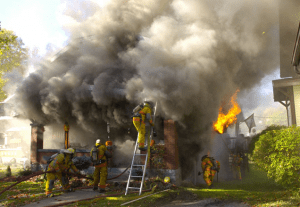 Performing a rapid size up during a dynamically changing event like a structure fire is essential. Not because the building will burn down if more time is taken (though as I noted that may happen). Rather, it’s because in a dynamic event the information is changing so rapidly that your brain will quickly become overloaded with trying to process and comprehend the volume of information coming at it.
Performing a rapid size up during a dynamically changing event like a structure fire is essential. Not because the building will burn down if more time is taken (though as I noted that may happen). Rather, it’s because in a dynamic event the information is changing so rapidly that your brain will quickly become overloaded with trying to process and comprehend the volume of information coming at it.
Think about it this way. If I gave you a sequence of seven random two-digit numbers over the course of a thirty second period of time and then asked you to recall the fifth number in the sequence, you’d probably be able to recall it with ease.
But, if I gave you a list of seven different and random two-digit numbers numbers every thirty seconds over the course of five minutes and then asked you to remember the eighteenth number I gave you, your performance would likely be abysmal. Why? Information overload. Under stress, you’ll do better when you process small amounts of information versus a large amount of information over a longer period of time.
Remember Ug, your cave dwelling ancestor?
 Perhaps you may recall from previous articles my discussions about your cave dwelling ancestors and their influence on your genetic engineering and your performance under stress. Imagine Ug is out on his daily hunt for food. A predator is fast approaching and it’s “game on.” The Fight or Flight response engages.
Perhaps you may recall from previous articles my discussions about your cave dwelling ancestors and their influence on your genetic engineering and your performance under stress. Imagine Ug is out on his daily hunt for food. A predator is fast approaching and it’s “game on.” The Fight or Flight response engages.
Ug is going to have a bunch of clues and cues to process in a compressed amount of time. But there’s really only a handful of clues that are going to be important to survival, perhaps five to seven, but definitely not dozens or hundreds. And while the scene is rapidly unfolding, it’s all going to be over quickly – perhaps in 10 to 30 seconds. The size up must be rapid and accurate. [tweet this] Sounds a lot like a fireground size-up, doesn’t it?
For once, your genetic engineering is working in your favor when it comes to making an accurate, timely incident scene size-up.
The secondary size-up
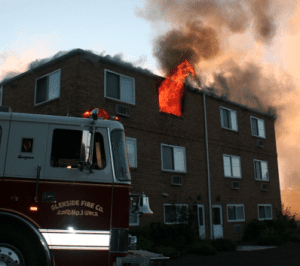 The secondary size-up is as important as the primary. Again, there is a misconception that the secondary size-up is to capture what may have been missed in the primary. And while this may have an element of truth, from the perspective of situational awareness, the secondary size up serves a completely separate, yet critically important role.
The secondary size-up is as important as the primary. Again, there is a misconception that the secondary size-up is to capture what may have been missed in the primary. And while this may have an element of truth, from the perspective of situational awareness, the secondary size up serves a completely separate, yet critically important role.
The secondary size-up should take considerably more time. Two to three minutes is not out of the realm of possibility. In addition to capturing clues and cues that confirm or refute the intuition of your initial size up, the secondary size up is your first opportunity to develop Level 3 situational awareness – predicting future events.
If you’ve been reading my articles up to this point, you should understand that the ability to predict future events is a catastrophically important skill set for a commander or company officer. To predict where the event is going, and how fast it’s going to get there, you must first understand the SPEED at which the incident is moving. And every dynamic incident scene has a speed.
The secondary size-up, conducted over a two to three minute period allows you to grasp the speed of the incident. Armed with that information, you can now make reasonable predictions as to whether the resources you have on hand are going to be able to outmaneuver the incident (based on it’s speed).
The speed of what?
What things are you looking to understand the speed of? Essentially, there are three things.
- The speed of the smoke: This is both in terms of the quantity being generated and how fast (or angry as Dave Dodson puts it) the smoke is moving.
- The speed of the fire: Again, this is in terms of the quantity of flames being generated and how fast the flames are moving.
- The speed of building decay: Make no mistake about it, every building on fire IS in the process of falling down. And when the building decays to the point where it can no longer be held up against the forces of gravity, it IS going to fall down.
Snapshots and movies
What I’ve described here are two visual processes. One, the primary size-up is a snapshot in time – a rapid gathering of a small number of clues and cues, intended to form pattern matches to past experiences and training stored in your brain to prime your recognition and trigger your intuition.
I’ve described here are two visual processes. One, the primary size-up is a snapshot in time – a rapid gathering of a small number of clues and cues, intended to form pattern matches to past experiences and training stored in your brain to prime your recognition and trigger your intuition.
The second visual process isn’t a snapshot. It’s a movie. The secondary size-up is a prolonged visual assessment of the speed of change over time that helps you determine if your personnel can out maneuver (out run) the incident.
The on-going size-up
In a dynamic environment the primary and secondary size up primes the pattern matching and helps a commander or company officer understand what is happening at that moment in time (the snapshot) and where the incident is heading in the future (the movie). But the size up doesn’t end there…
As conditions change, the commander must continually re-assess the conditions because the clues and cues are continually evolving and the speed of the incident is subject to change throughout the incident.
Conduct the size-up or delegate it?
This is a common question I get asked all the time. The short and sweet answer is: Conduct it yourself. You cannot effectively delegate the processing of sensory clues and cues that will form your pattern matches and prime your intuition. It is very unrealistic to expect someone else’s verbal report will be able to effectively prime your recognition.
It’s not impossible, but their verbal account to you of the clues and cues would have to be so vividly described that it would take them longer to explain it than it would for you to view it for yourself and there is NO WAY anyone else could EVER describe the roughly eleven million bits information your brain is going to process every second.
The best, and most accurate, size up will be the one you conduct yourself. [tweet this]
The strongest situational awareness will be held by the person who is able to personally assess the speed of the smoke, fire and building decay first-hand.
Commanding from a remote location
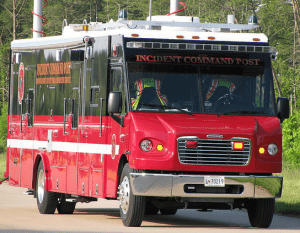 Another frequent question I get asked is how a commander can sit in a command vehicle a block away from an incident and have any idea of what is going on? The downside is, they can’t. The upside is, they may not need to. That statement requires some unpacking. If the remote commander has competent decision-making divisions and sector officers who can accurately relay the gist of the situation, that may be enough for the command of a large-scale incident to coordinate activities.
Another frequent question I get asked is how a commander can sit in a command vehicle a block away from an incident and have any idea of what is going on? The downside is, they can’t. The upside is, they may not need to. That statement requires some unpacking. If the remote commander has competent decision-making divisions and sector officers who can accurately relay the gist of the situation, that may be enough for the command of a large-scale incident to coordinate activities.
Whenever I commanded from a remote command post, while being called the incident commander, I felt more like an incident coordinator. The real decisions about how the event was being managed tactically were being made by those in the forward position – namely the operations officer in conjunction with the safety officer.
My role was merely to ensure they had the resources to complete their mission. When you think about the strategic roles of a large-scale incident being Command, Finance, Logistics, Operations and Planning (CFLOP), it’s easy to see there is one role best suited for forward decision making (Operations).
Where commanders can get caught sideways is when they try to make operational (tactical) decisions from remote locations without the benefit of a primary size-up, secondary size-up or an ongoing size-up.
To be effective, a remote commander must have competent officers in forward positions who can perform the size-ups.[tweet this]
Chief Gasaway’s Advice
 Conduct your own primarily and secondary size-ups to ensure your process of size-up is on-going and relevant to the role you are filling.
Conduct your own primarily and secondary size-ups to ensure your process of size-up is on-going and relevant to the role you are filling.
Keep in mind that a good size-up in a dynamic environment involves a snapshot, followed by a movie, followed by another snapshot and another movie and the process continues throughout the incident.
An effective size up, especially by first arriving personnel should include a 360-degree walk around to evaluate the incident scene. Even if nothing is happening on the back side of a structure, that is valuable information.
If you’re commanding the incident, conduct the primary size-up and then stay back far enough from the action to see the big picture. Far enough away also means you won’t be tempted to become a hands-on commander. Ensure you are not in the midst of the action. Far enough back to avoid interruptions and distractions, yet ensure you are close enough to capture the critical clues and cues.
If you’re going to command from a remote location where you cannot capture clues and cues first-hand, be willing to relegate the tactical decision making to forward division or sector officers who are in the best position to see the changing conditions.
Discussion questions
 1. What are some tips and tricks you use when conducting your primary size up to ensure you are gathering the right information?
1. What are some tips and tricks you use when conducting your primary size up to ensure you are gathering the right information?
2. What are the factors that help you assess the speed of the incident (smoke and fire)?
3. What are the clues and cues that help you determine the speed of the building decay?
Just curious… do you remember the sixth number in the sequence of numbers listed earlier in the article?
_____________________________________________________________
The mission of Situational Awareness Matters is simple: Help first responders see the bad things coming… in time to change the outcome.
Safety begins with SA!
_____________________________________________________________
Share your comments on this article in the “Leave a Reply” box below. If you want to send me incident pictures, videos or have an idea you’d like me to research and write about, contact me. I really enjoy getting feedback and supportive messages from fellow first responders. It gives me the energy to work harder for you.
Thanks,

Email: Support@RichGasaway.com
Phone: 612-548-4424
Facebook Fan Page: www.facebook.com/SAMatters
Twitter: @SAMatters
LinkedIn: Rich Gasaway
YouTube: SAMattersTV
iTunes: SAMatters Radio

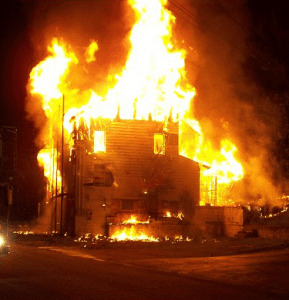

I may not be a first responder, but I really appreciate your articles. I’m researching firefighting for a screenplay I’m writing. Thanks Rich!
Trevor,
Thanks for the comment. Best of success with the screenplay. Let me know how I can support your efforts.
Rich
Just stumbled across your site Rich. I’ve got 30 years on my dept. and I’m close to becoming a BC. Sadly my dept. only recently started to give us this kind of training, but it’s slow in getting delivered to us (I’m sure you know how that goes). So I’ve found myself searching the web to help get the info I know I need. Info like you are sharing is greatly appreciated.
Dave,
Thank you for posting the kind comment. I sincerely appreciate your feedback. Your input inspires me to want to work harder to get my message out to first responders. The popularity of my live 1 and 2 day programs has been truly gratifying to me and puts the exclamation point on the need for this kind of information. Please consider sharing the site with others and encouraging them to sign up for the newsletter and the RSS feed. The more we grow the community, the easier it will be to spread the message and improve firefighter safety.
Rich
Hi Rich. I recently learned about you in a 2012 First Few Moments podcast I listened to this week. I’m excited about all your work. I am a Red Cross Volunteer in Spain currently collaborating in a work group to define a sort of DMAT team. I’ve been teaching command and control and ICS to Red Cross Operations Chiefs, and when I talked about SA, they seemed as they were looking at a Picasso’s abstract painting. In Spain Firefighters may know about SA, but it is si-fi for EMS.
Thanks for sharing all your work and knowledge with us.
Rich,and fellow Members, I’ve always felt that an initial size up on any structure can help you determine what is to follow.An example of this happened about 25 years ago. A classmate of mine, who became a policeman,was doing his rounds on a night shift. As he was patrolling in his car, his dispatcher informed him of smoke coming from a warehouse nearby. As he approached this warehouse, two 55 gallon drums exploded,and blew through the roof like guided missiles. He reported his size up to the dispatcher, and in turn the dispatcher notified the fire department. A keen eye and further information, gave a basic size up on what was going on,and what was involved. My thoughts on this…good job for that police officer. Even though the size up was verified, he gave a detail on what was involved, what was happening, and what exposures there were.
Another great article on Situational Awareness. Though the information is geared towards structure fires I do believe that the same format could and would apply to dealing with MVC’S on busy highways and also responding to Medical Emmergencies ? Also perhaps Wildland /Urban fires. Always a great read that is though provoking @Sammatters